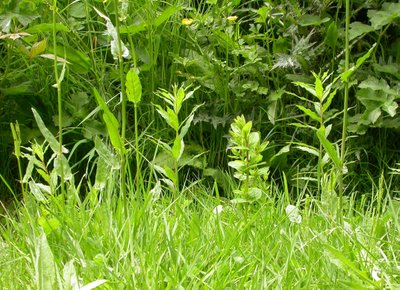

There was a large black slug, as is often the case, under Pitfall Rock today. While photographing other smaller things I noticed that the slug had a rather fine fingerprint pattern on the mantle (just behind the head - see above), so I took a picture of this. I also managed, by accident rather than design, to get a picture of the black-spotted tentacles (also above).
On checking the identity in the
Field Key to the Slugs of the British Isles I discovered that it was an
ash-black slug (aka
ash-grey slug)
Limax cinereoniger. In the literature it says this is a species of ancient woodland, indeed it is regarded as an indicator species. Although we have an ancient woodland at the bottom of the garden, it would take some stretch of the imagination to regard M3 as wooded, whether anciently or not. The slug is officialy designated a 'Notable/Nr' species(meaning 'regionally notable).
One conchologist has said this species does "not occur in woods which look like or are known to be plantations, and their discovery is probably as good a piece of evidence as can be had that a wood is on a primaeval site."
 The weather remains cold and damp and the few insects that are about in the square metre looked hunched and miserable as they take shelter in the vegetation.
The weather remains cold and damp and the few insects that are about in the square metre looked hunched and miserable as they take shelter in the vegetation.















